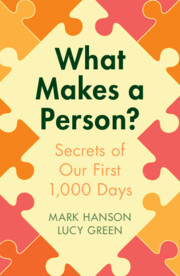Refine search
Actions for selected content:
74 results
7 - Imagine to Re-Imagine
- from Part II - Constitutional Law
-
-
- Book:
- Inter-Asian Law
- Published online:
- 16 December 2025
- Print publication:
- 22 January 2026, pp 130-145
-
- Chapter
-
- You have access
- Open access
- HTML
- Export citation
Aflatoxin exposure during pregnancy or infancy and its effect on infant health: a narrative review
-
- Journal:
- British Journal of Nutrition , First View
- Published online by Cambridge University Press:
- 24 September 2025, pp. 1-12
-
- Article
- Export citation
Ventricular tachycardia in fetus and neonate: a single centre experience
-
- Journal:
- Cardiology in the Young / Volume 35 / Issue 6 / June 2025
- Published online by Cambridge University Press:
- 30 June 2025, pp. 1184-1188
-
- Article
-
- You have access
- Open access
- HTML
- Export citation
6 - The Beginning of Girlhood under International Law
-
- Book:
- The Status of the Girl Child under International Law
- Published online:
- 06 March 2025
- Print publication:
- 13 March 2025, pp 154-179
-
- Chapter
- Export citation
Infants of diabetic mothers: epidemiology, pathophysiology, fetal heartassessment, structural and functional heart consequences: A narrative review
-
- Journal:
- Cardiology in the Young / Volume 34 / Issue 10 / October 2024
- Published online by Cambridge University Press:
- 07 January 2025, pp. 2068-2073
-
- Article
- Export citation
Coffee intake leads to preeclampsia-like syndromes in susceptible pregnant rats
-
- Journal:
- Journal of Nutritional Science / Volume 13 / 2024
- Published online by Cambridge University Press:
- 18 September 2024, e34
-
- Article
-
- You have access
- Open access
- HTML
- Export citation
Myxomatous degeneration of cardiac valves in a fetus with 6q25.1 (TAB2) deletion
-
- Journal:
- Cardiology in the Young / Volume 34 / Issue 2 / February 2024
- Published online by Cambridge University Press:
- 03 January 2024, pp. 459-461
-
- Article
- Export citation
Attenuated glucose-stimulated insulin secretion during an acute IGF-1 LR3 infusion into fetal sheep does not persist in isolated islets
-
- Journal:
- Journal of Developmental Origins of Health and Disease / Volume 14 / Issue 3 / June 2023
- Published online by Cambridge University Press:
- 28 April 2023, pp. 353-361
-
- Article
- Export citation
Oral pyrroloquinoline quinone (PQQ) during pregnancy increases cardiomyocyte endowment in spontaneous IUGR guinea pigs
-
- Journal:
- Journal of Developmental Origins of Health and Disease / Volume 14 / Issue 3 / June 2023
- Published online by Cambridge University Press:
- 02 March 2023, pp. 321-324
-
- Article
- Export citation

What Makes a Person?
- Secrets of our first 1,000 days
-
- Published online:
- 03 November 2022
- Print publication:
- 03 November 2022
2 - A Narrow Escape
-
- Book:
- What Makes a Person?
- Published online:
- 03 November 2022
- Print publication:
- 03 November 2022, pp 38-65
-
- Chapter
- Export citation
3 - Growing in the Dark
-
- Book:
- What Makes a Person?
- Published online:
- 03 November 2022
- Print publication:
- 03 November 2022, pp 66-91
-
- Chapter
- Export citation
Chapter 9 - Antepartum Fetal Monitoring
- from Section 2
-
-
- Book:
- Anesthesia for Maternal-Fetal Surgery
- Published online:
- 19 November 2021
- Print publication:
- 11 November 2021, pp 119-136
-
- Chapter
- Export citation
Chapter 10 - Myelomeningocele Repair
- from Section 3
-
-
- Book:
- Anesthesia for Maternal-Fetal Surgery
- Published online:
- 19 November 2021
- Print publication:
- 11 November 2021, pp 137-151
-
- Chapter
- Export citation
It takes two: An antenatal to postnatal RDoC framework for investigating the origins of maternal attachment and mother–infant social communication
-
- Journal:
- Development and Psychopathology / Volume 33 / Issue 5 / December 2021
- Published online by Cambridge University Press:
- 06 September 2021, pp. 1539-1553
-
- Article
- Export citation
A prenatal diagnosis of unusual aortopulmonary communication: tubular aortopulmonary window
-
- Journal:
- Cardiology in the Young / Volume 31 / Issue 8 / August 2021
- Published online by Cambridge University Press:
- 04 June 2021, pp. 1327-1329
-
- Article
- Export citation
Hair cortisol levels in pregnancy as a possible determinant of fetal sex: a longitudinal study
-
- Journal:
- Journal of Developmental Origins of Health and Disease / Volume 12 / Issue 6 / December 2021
- Published online by Cambridge University Press:
- 07 January 2021, pp. 902-907
-
- Article
-
- You have access
- Open access
- HTML
- Export citation
It’s Complicated: What Our Attitudes toward Pregnancy, Abortion, and Miscarriage Tell Us about the Moral Status of Early Fetuses
-
- Journal:
- Canadian Journal of Philosophy / Volume 50 / Issue 8 / November 2020
- Published online by Cambridge University Press:
- 15 December 2020, pp. 950-965
-
- Article
- Export citation
Association between gestational cannabis exposure and maternal, perinatal, placental, and childhood outcomes
-
- Journal:
- Journal of Developmental Origins of Health and Disease / Volume 12 / Issue 5 / October 2021
- Published online by Cambridge University Press:
- 07 December 2020, pp. 694-703
-
- Article
- Export citation
